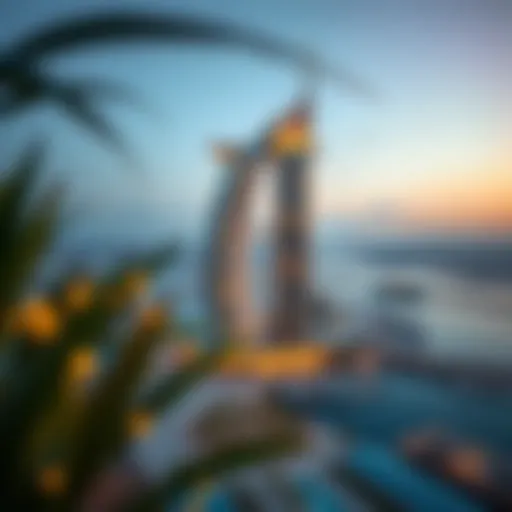Exploring RAK Building: The Essence of Luxury and Utility
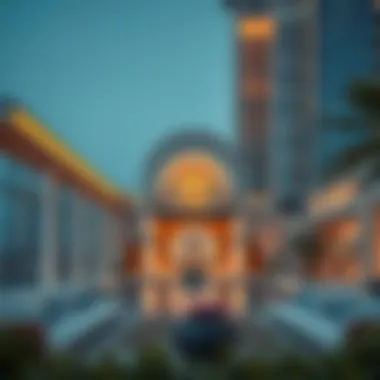

Intro
As the sun rises over the sprawling metropolis of Dubai, the skyline is forever changing, marked by innovative structures and luxurious living spaces. Within this architecture-hungry environment, RAK building emerges, a term that has picked up steam among savvy investors and homebuyers alike.
RAK, short for Ras Al Khaimah, signifies more than just a location; it's a standard for luxury homes fused with practical designs. In essence, exploring RAK building goes beyond mere aesthetics; it embodies the principles of sustainability and functionality while catering to the ever-evolving demands of the real estate market.
The upcoming sections of this article aim to peel back the layers of RAK building in Dubai, covering its architectural marvels, valuable investment opportunities, and the sustainable practices that are now at the forefront of real estate developments. Whether you’re a first-time buyer dipping your toes into the real estate waters or an experienced investor scouting the next big opportunity, the insights gained here are targeted precisely to meet your needs.
Let's dive into the thriving property trends that characterize Dubai's real estate landscape and see how RAK building fits into this vibrant puzzle.
Understanding RAK Building
Understanding RAK Building is crucial for anyone interested in navigating the intricate maze of Dubai’s real estate market. As the construction landscape shifts towards a blend of luxury and functionality, grasping the essence of RAK Building unveils insights relevant for investors, renters, and homebuyers alike. This understanding facilitates informed decisions, particularly when evaluating properties that balance lavish living with practical designs.
Defining RAK Building
At its core, RAK Building refers to properties constructed in Ras Al Khaimah, an emirate that has gained traction for its unique architectural offerings. It symbolizes a shift toward incorporating elements that embody both opulence and utility. Think wide, airy spaces designed for modern living while also reflecting cultural heritage. For example, many buildings feature indigenous materials and traditional designs seamlessly merged with contemporary aesthetics.
The hallmark of RAK Building lies in its commitment to creating environments that elevate the living experience without compromising the functionality required in daily life. Whether it's high-end amenities or energy-efficient designs, these buildings aim to cater to diverse lifestyles, ensuring that every square foot serves a purpose—blending luxury with necessity.
Historical Context
To appreciate RAK Building, one must consider its historical roots. The development of Ras Al Khaimah as a notable hub began in the early 20th century, with tangible growth visible post the establishment of the UAE in 1971. Over the past decades, RAK has evolved from a quiet coastal town into a vibrant city bustling with life and opportunity.
Investment in infrastructure during the late 20th century laid the groundwork for today’s architectural advancements. Understanding the timeline of historical significance reveals how RAK has adapted to changing demands while maintaining its rich heritage. The emirate’s focus on sustainable growth aligns with global trends and reflects an acknowledgment of environmental responsibility. Judging by its architectural landscape, RAK Building is not just about erecting structures; it's about fostering communities and enhancing quality of life.
In summary, comprehending RAK Building involves recognizing its definition, historical significance, and the broader implications for the real estate sector in Dubai. This context is critical for stakeholders aiming to grasp the nuances of the market while considering investments or leasing opportunities within this compelling environment.
Architectural Characteristics
Architectural characteristics are the backbone of any real estate development, particularly within the context of RAK building. In Dubai's competitive property market, where luxury often meets functionality, these characteristics play a pivotal role in attracting investors, home buyers, and renters. On one hand, they need to reflect opulence; on the other, they should cater to the practical needs of modern living. This duality is essential in establishing RAK buildings as desirable investments and residences.
Design Principles
The foundation of RAK building starts with its design principles. These principles intertwine aesthetics and user experience, resulting in structures that are not just visually stunning but also user-friendly. A key element is the balance between form and function. Everyone has walked by a magnificent building at some point, but what makes it remarkable?
- Proportionality: Buildings often need to fit into an existing skyline or urban fabric. Proportional design ensures that no structure feels out of place.
- Adaptability: In a rapidly changing market, design that can adapt to multiple uses is invaluable. RAK buildings often feature spaces that can serve residential and commercial functions seamlessly.
- Natural Light: Effective design maximizes natural light, improving energy efficiency and the overall ambiance, which ultimately elevates the living experience.
These design principles underscore the architectural ethos of RAK buildings, ensuring that they are more than just structures—they are living environments that enhance the quality of life.
Materials and Aesthetics
When it comes to materials and aesthetics, RAK buildings exemplify a harmony between luxury and sustainability. The choice of materials is crucial; not only do they need to please the eye, but they must also stand the test of time.
- Quality of Materials: High-grade materials like marble, glass, and steel are prevalent in RAK constructions. The allure of these materials enhances the property’s market value.
- Cultural Influence: Many buildings incorporate traditional Middle Eastern design elements while marrying them with modern finishes. This blend creates a unique aesthetic that appeals to both local and international buyers.
- Sustainability Movement: Emerging trends focus on using recycled or locally sourced materials, which not only cut down on carbon footprints but also resonate with environmentally conscious consumers.
So, when we examine the materials and aesthetics of RAK building, we see a fantastic way to push boundaries while remaining relevant to the market needs.
Integration with Surroundings
The ability to harmonize with the surroundings is a hallmark of successful architecture. RAK buildings are designed with consideration of their environment, whether natural or urban. This integration can manifest in several vital aspects:
- Landscape Harmony: Landscaping often complements the architecture, using native plants to ensure that it blends with the local flora.
- Civic Spaces: The strategic placement of community-enhancing elements, such as parks or public plazas, next to residential buildings enriches not just the property, but the local community as a whole.
- Environmental Considerations: Structures that respect the natural geography and climate can lead to better energy conservation and a more sustainable living experience.
Integrating buildings into their natural and urban surroundings promotes a sense of community and pride among residents while safeguarding natural ecosystems.
In summary, architectural characteristics underpin the appeal of RAK buildings. Whether it's through thoughtful design, the choice of premium materials, or a commitment to environmental synergy, these characteristics ensure that each property stands out in Dubai’s bustling real estate market. The unique approach to balancing luxury and functionality makes RAK buildings not just a place to live, but a lifestyle choice.
Sustainability in RAK Building
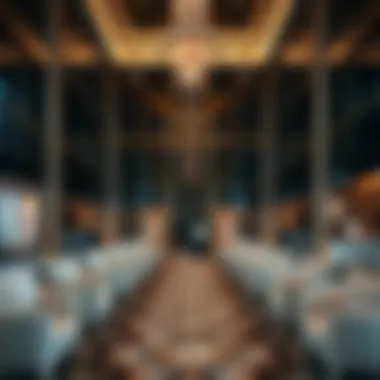

In today’s fast-paced world, the concept of sustainability is more than just a buzzword; it's a necessity. RAK building embraces this ethos by integrating eco-friendly principles into its architecture and practices. The importance of sustainable real estate cannot be overstated, especially in a vibrant market like Dubai's. With its unique environmental challenges, addressing sustainability helps foster a sense of responsibility among developers and residents alike. Incorporating sustainable practices ensures the longevity of structures and their harmonious coexistence with nature, which is crucial for both local and global health.
Eco-friendly Practices
RAK buildings are at the forefront of eco-friendly development, employing a variety of practices designed to minimize environmental impact. One prominent method is the use of recycled and locally-sourced materials in construction. This not only reduces the carbon footprint associated with transporting materials but also supports local economies. Additionally, many RAK buildings integrate green roofs and walls, which offer improved insulation and enhance biodiversity within urban settings.
Moreover, rainwater harvesting is increasingly common in RAK buildings. This practice allows for the collection and storage of rainwater for non-potable uses such as irrigation and flushing, thus alleviating pressure on the municipal water supply. Furthermore, landscaping often utilizes xeriscaping, a design technique that promotes drought-resistant plants and requires minimal irrigation, making it perfect for the arid climate of the region.
Energy Efficiency Measures
As energy demands soar, RAK building takes a proactive approach in implementing energy efficiency measures. Many of these buildings feature advanced technologies like photovoltaic panels harnessing solar energy, effectively reducing reliance on traditional energy sources. With Dubai receiving abundant sunlight, adopting solar power is not just practical, but can also lead to significant cost savings in the long run.
Furthermore, RAK buildings often utilize energy-efficient appliances and LED lighting, which consume less energy than their traditional counterparts. The implementation of smart building technologies, which include sensors to monitor and adjust energy usage based on occupancy and daylight, shows a commitment to reducing unnecessary energy consumption. This keen focus on energy efficiency is not just favorable for the environment; it also enhances the operational cost-effectiveness of real estate investments.
Future-oriented Innovations
Looking ahead, RAK building is poised to embrace future-oriented innovations that will shape the real estate landscape. One notable trend is the integration of smart home technologies designed not only to enhance comfort but also promote sustainability. For instance, smart thermostats and energy management systems allow for real-time monitoring and optimization of energy use.
Additionally, the region is witnessing an increased interest in sustainable materials like bamboo and reclaimed wood, which are becoming vital components in eco-conscious design. The promotion of modular construction techniques is also gaining traction. These methods enable faster assembly on-site, resulting in reduced waste and energy consumption during the construction phase.
As we advance towards a more ecologically responsible future, RAK building serves as a model for how luxury and sustainability can coexist, working in tandem to create spaces where residents can thrive and the environment can flourish.
"Incorporating sustainability into urban living isn't just a fancy idea—it's a fundamental shift in how we view development and community."
By aligning building practices with sustainable principles, RAK building not only enhances its appeal to discerning investors but also contributes to a healthier living environment for generations to come.
Market Demand and Trends
Understanding market demand and trends plays a crucial role in interpreting the dynamics of the real estate landscape, especially in a fast-paced environment like Dubai. The way buyers and investors respond to shifts in demand reflects broader economic indicators and social preferences, significantly impacting both luxury and functional aspects of RAK building. As urban populations burgeon and lifestyles evolve, recognizing these trends will help potential investors and homeowners make informed decisions, fostering a more vibrant market.
Current Market Analysis
Analyzing the current real estate market reveals a blend of luxury and practicality in RAK buildings. According to recent reports, affluent buyers are increasingly seeking properties that not only showcase opulent designs but also meet their functional needs. This tendency is largely fueled by a shift in priorities, where amenities such as smart home technology and eco-friendly materials take precedence.
- Key Facts:
- An estimate shows that prices for RAK building properties have seen an upward trend exceeding 10% over the past two years.
- Demand is particularly high among expatriates and high-net-worth individuals, eager to find residences that combine luxury with sustainable living.
Moreover, regional factors, including economic stabilization and favorable governmental policies, are further propelling this demand. The proactive approach by developers in RAK, embracing trends like mixed-use developments, has also contributed to heightened interest in the market.
Emerging Trends
In recent months, several emerging trends have begun to shape RAK real estate. One significant trend is the increasing focus on sustainability. As environmental concerns rise, buyers are leaning toward properties that offer green certifications and energy-efficient designs. Features such as solar panels, rainwater harvesting systems, and use of sustainable materials are now seen as valuable assets in any new development.
- Emerging elements to watch:
- Smart Technology: Integration of smart home capabilities increases property value and meets the needs of tech-savvy residents.
- Communal Spaces: Developments now often include shared facilities to foster community engagement, a move that is resonating well with modern urban dwellers.
Additionally, there's a noticeable shift towards minimalist designs that maximize space while maintaining elegance. As people reassess their living requirements in the post-pandemic era, a preference for spacious apartments that offer both comfort and functionality has become apparent.
Forecasting Future Demands
Looking ahead, predicting future demands within the RAK real estate market presents certain challenges yet also many opportunities. Demographic shifts, such as a growing younger population, are likely to influence the type of housing in demand. This group tends to prioritize lifestyle amenities and connectivity over purely opulent fixtures.
- Potential Future Trends include:
- Increased Urbanization: As more people migrate towards urban centers, the need for RAK buildings that cater to urban lifestyles will soar.
- Affordability Initiatives: With government interventions aimed at making housing more affordable, developers may pivot towards creating diversified housing solutions.
Furthermore, as global consciousness about environmental sustainability on the rise, we can expect buyers in RAK to increasingly prioritize properties that not only serve their immediate needs but also align with broader environmental goals.
The evolution of the real estate landscape in RAK signals a shift towards properties that combine opulence with sensibility, as buyers become investors in their future lifestyles.
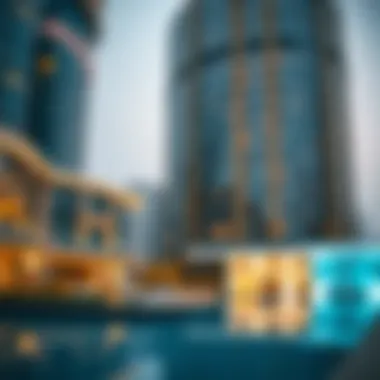

Through careful consideration of these market demands and trends, potential investors and property seekers can strategically position themselves in an ever-changing market, balancing luxury with functionality.
Investment Potential
The concept of investment potential in RAK building holds significant relevance for those looking to navigate Dubai's dynamic real estate landscape. With a keen focus on luxurious designs and functional living spaces, properties in this region are not just about aesthetics; they're also about solid returns and long-term value. Investors and potential homeowners alike should understand how these properties contribute to broader economic growth and personal wealth accumulation.
In considering RAK buildings, several essential elements come into play:
- Market Positioning: RAK buildings often sit in strategic locations that appeal to both luxurious living and practical commuting. Investing here means tapping into areas that promise consistent demand, owing to their accessibility and amenities.
- Property Appreciation: The Dubai real estate market has a history of robust appreciation. Buildings built with modern aesthetics, energy efficiency, and community integration are likely to retain and increase their value over time, providing solid returns for those who invest wisely.
- Rental Yield: For investors planning to rent out properties, RAK buildings often provide attractive rental yields due to their appeal to tourists and expatriates. Enhanced livability and unique features often make these properties more desirable, aligning with higher rental prices in the market.
- Economic Stability Factors: Despite global economic fluctuations, RAK's strategic efforts toward diversification and infrastructure development make it a resilient location for investment. Understanding how the government’s policies affect the market can help investors make informed decisions.
Investing in RAK properties not only represents an opportunity to secure a piece of luxury real estate but also contributes positively to local communities. Such investments often spur further development, enhancing living standards and creating a thriving urban environment.
Analyzing ROI
When it comes to investing in RAK properties, analyzing the return on investment (ROI) is crucial. This involves evaluating various factors that influence financial returns, beyond just the purchase price.
- Cost Analysis: Investors should take into account both acquisition costs and potential renovations or upkeep. Understanding the total cost will provide better clarity on what returns can realistically be expected.
- Rental Demand Assessment: Keeping an eye on rental trends in the area helps gauge potential income. Do properties in this area attract tenants quickly? Are current rental prices justifiable compared to other regions?
- Maintenance and Operations: High-end properties often come with higher maintenance costs. It’s smart to consider periodic expenses when calculating ROI, since these can chip away at your profits if left unchecked.
- Market Positioning and Exit Strategies: Understanding how the local market is evolving can inform decisions about the timing of selling the property. Smart investors keep a pulse on the competition and market dynamics to maximize their exit opportunities effectively.
In short, gaining a clear picture of ROI is all about having a mix of good data analysis and industry insight, which can make or break an investment.
Investment Opportunities and Risks
Every investment carries its risks, and RAK building is no exception. However, uncovering the opportunities within these risks is where savvy investors can thrive.
Opportunities:
- Emerging Markets: As new developments continue to rise in RAK, early investments can yield substantial benefits as these areas gain popularity and infrastructure improves.
- Diversifying Portfolios: RAK buildings offer a unique mix of luxury and practicality, making them an excellent addition to any real estate portfolio, potentially balancing out more volatile investments.
- Tax Benefits: Depending on local laws, certain investments may offer tax incentives that further enhance profitability. This can be a game-changer for investors maximizing their profits.
Risks:
- Regulatory Changes: Dubai's property laws can sometimes change. Investors need to keep their ear to the ground regarding upcoming regulations that may impact their investment.
- Market Volatility: Like any real estate market, fluctuations can occur. Investors should be prepared for slow periods and possible decreases in property value.
- Over-saturation: As more buildings are constructed, there is the risk of oversupply in certain sectors. It’s vital to not only predict where demand will remain but also where it might dwindle.
RAK Building and Community Impact
The influence of RAK building on community dynamics extends beyond brick and mortar; it shapes the very fabric of society in which it resides. By marrying luxury with functionality, RAK building endeavors to elevate living standards while fostering a sense of community. The significance of this topic in the context of our exploration lies in its potential to redefine what it means to live immersed in an environment that aligns personal aspirations with collective well-being.
Enhancing Living Standards
RAK buildings often serve as cornerstones of growing neighborhoods, representing more than just residential spaces. The inclusion of amenities such as parks, gyms, and community centers establishes a holistic living experience where every member can thrive. These features promote physical and mental well-being, transforming living spaces into nurturing environments.
The shift from traditional urban planning to incorporating mixed-use developments exemplifies this concept. People are increasingly seeking homes that cater to their entire lifestyle, offering not just a roof over their heads but also places to socialize and foster relationships. For example:
- Community Parks: Spaces where families can gather, children can play, and residents can host events.
- Wellness Centers: Facilities focused on physical health, promoting fitness and mindfulness.
- Workspaces: Co-working spaces within residential areas that encourage flexible working arrangements.
These aspects weave together to create a robust community of engaged individuals, enhancing overall quality of life.
Community Engagement and Involvement
When discussing community impact, involvement from residents plays an essential role. RAK buildings encourage this through various initiatives that promote interaction among neighbors. By creating platforms for residents to voice their ideas and concerns, developers can refine their approaches, leading to more successful projects.
“A community is built on trust and shared experiences. RAK building allows for that by prioritizing inclusive spaces.”
Initiatives can include:
- Workshops: Educational programs that empower residents with new skills while facilitating interaction.
- Events: Regular social gatherings, such as holiday celebrations or farmers’ markets, nurture relationships and strengthen bonds.
- Feedback Loops: Channels for residents to contribute to ongoing improvements ensure that developments continue to meet community needs.
The synergy between RAK building and community involvement paints a picture of progressive living, where residents not only inhabit their spaces but also partake in the creation of a vibrant, supportive community.
In sum, the understanding of how RAK building affects community dynamics showcases its dual role. It provides luxury living while fostering an engaged society, aligning with the aspirations of today’s discerning residents.
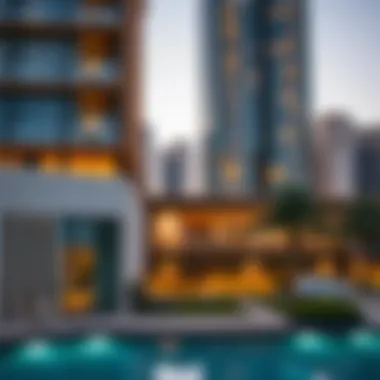

Challenges in RAK Building
In the ever-evolving realm of real estate, especially in a vibrant market such as Dubai, challenges associated with RAK building can't be brushed aside. This section sheds light on the hurdles that developers and investors face. Understanding these challenges is crucial for making informed decisions in property investments, particularly as it pertains to the unique characteristics of RAK buildings. Recognizing obstacles means stakeholders can devise strategies to tackle them, ultimately enhancing the project's success and desirability. Here, we dive into two main challenges: regulatory hurdles and market saturation issues.
Regulatory Hurdles
Navigating the regulatory landscape in Dubai can feel like walking a tightrope. For RAK building, developers often face a web of legal requirements and local regulations that can slow down the project timeline significantly. These regulations may encompass zoning laws, building codes, and environmental standards, all of which need to be meticulously adhered to.
A prime example is how the Dubai Land Department imposes strict standards for property documentation. Developers often find themselves tangled in bureaucratic red tape when attempting to secure necessary permits. This is not just a minor inconvenience; it can lead to costly delays and increased project budgets. The adherence to these regulations can make or break the viability of a real estate project.
Furthermore, changes in government policies stemming from economic shifts may lead to unexpected adjustments. For instance, in recent years, the government has introduced various laws aimed at enhancing sustainability within the construction sector. While these changes can push the industry toward greener practices, they may require RAK builders to adapt plans and budgets, thus complicating existing projects.
Given these complexities, collaboration with local authorities and a clear understanding of the regulatory environment is vital for developers aiming to navigate these choppy waters successfully.
Market Saturation Issues
Market saturation is another significant challenge within the RAK building landscape. The rapid growth of the real estate sector in Dubai has led to a surge in the construction of high-end properties. Simply put, when the supply outpaces demand, the competition can become fierce.
A visible manifestation of this competition can be seen in certain neighborhoods, where multiple luxury developments are vying for the attention of potential buyers. When consumers are presented with numerous options, it becomes increasingly difficult for individual projects to stand out. Investors might find that the properties they once deemed a goldmine are now struggling to attract buyers or renters, particularly if they don’t possess unique selling propositions.
In addition, some RAK buildings, despite their luxury branding, may not meet the evolving expectations of a discerning clientele. The old adage of "what goes up must come down" rings especially true here; when the market is flooded with similar high-end properties, many risk losing value, and that can be a bitter pill to swallow for investors.
To mitigate risks associated with market saturation, it’s crucial for developers to conduct thorough market analyses before initiating projects. Understanding target demographics, shifting consumer preferences, and overall market conditions isn't just useful; it's essential. Being proactive instead of reactive can go a long way in ensuring that RAK buildings not only find their niche but also thrive in a competitive market.
Future Outlook for RAK Building
The future outlook for RAK building holds significant implications for the real estate landscape in Dubai, where the interplay of luxury and functionality is becoming increasingly salient. As urban populations soar and demand for exceptional living environments intensifies, the way we envision residential and commercial spaces needs to adapt. This section takes a closer look at the trends that are set to shape RAK building in the coming years, emphasizing not just architectural advancements but also sustainable practices that align with global objectives.
Predictions in Architectural Development
Architectural development in the realm of RAK building is likely to pivot towards more innovative and user-centric designs. The integration of smart technology into homes isn't just a trend; it's becoming a necessity. Think about lighting systems that adjust to the rhythm of the day or energy-efficient kitchens that monitor consumption. Here are a few predicting factors that can influence the architectural landscape:
- Modular and Prefabricated Construction: This method is gaining traction, offering faster builds while maintaining high quality, thus allowing for customization on a broader scale.
- Mixed-Use Developments: Future RAK buildings might increasingly incorporate residential, commercial, and recreational spaces in one community, catering to a holistic living experience.
- Cultural Inspiration: As RAK buildings continue to emerge in a diverse cultural milieu, expect architectural designs that fuse local heritage with modern aesthetics, enriching the community while appealing to international audiences.
The aim here is simple yet profound: to create spaces that foster not just habitation, but a sense of belonging. As we look ahead, it is critical for developers and investors alike to keep their fingers on the pulse of these developments, ensuring they don’t miss the boat on opportunities that arise from such architectural evolution.
Sustainable Advancements
In a world increasingly attuned to environmental concerns, sustainable advancements in RAK building represent a hallmark of responsible development. These advancements are no longer peripheral but central to the planning and execution of new projects. We can expect to see an emphasis on the following aspects:
- Green Building Certifications: Aiming for certifications such as LEED or BREEAM will become more common, as they denote commitment to environmental standards and can substantially enhance property value.
- Renewable Energy Integration: Solar panels, wind turbines, and other renewable energy solutions are expected to become staples in RAK buildings, reducing dependency on traditional energy sources.
- Water Conservation Technologies: Innovative solutions like rainwater harvesting and efficient plumbing fixtures will likely be standard practice, as conserving water scales with climate challenges.
"Sustainability is no longer a choice; it’s a responsibility that discerning buyers now demand."
In sum, the future of RAK building is not just about erecting glamorous residences but constructing sustainable ecosystems that meet the needs of the present without compromising the future. The alignment of luxury with responsible practices will define the success of upcoming projects, as potential buyers and investors lean towards those ventures that exemplify a commitment to both elegance and environmental stewardship.
Culmination
The importance of the concluding section in this article on RAK building is pivotal for readers seeking a comprehensive understanding of the topic. It serves not merely as a recap, but rather as a springboard for further contemplation regarding luxury and functionality in real estate. In light of intricate architectural principles, sustainable practices, and emerging market trends observed throughout this discussion, the conclusion provides valuable context about the holistic view of RAK building.
In particular, a properly articulated conclusion can help in crystallizing the key insights gathered from various components of the article, enabling real estate investors, homebuyers, and renters to make informed decisions.
A well-rounded conclusion encapsulates several distinct elements:
- Reinforcement of Core Ideas: Summarizing the critical aspects elucidated in prior sections aids in reinforcing the main messages about luxury in RAK building—balancing opulence with practicality.
- Connections to Broader Trends: It’s important to recognize how RAK buildings relate to wider trends within Dubai’s real estate market, acting as a microcosm for future developments and sustainability practices.
- Insights for Decision-Making: For potential investors or buyers, understanding the implications surrounding RAK building can provide clarity on paths to take and opportunities to chase.
- Room for Future Considerations: Engaging the audience's imagination about future advancements in architectural design and sustainability encourages a forward-thinking mindset, essential for navigating a rapidly evolving property landscape.
Through these aspects, the conclusion not only highlights the article's core insights but also positions RAK building as a significant factor in Dubai's real estate narrative. The synergy of luxury and functionality is not simply a matter of aesthetics, but one that reflects the demands of today's discerning market players.
Summary of Key Insights
In distilling the essence of the article, several key insights emerge:
- RAK Building's Architectural Significance: The distinctive design principles set RAK buildings apart, further enhanced by their harmonious integration into the local landscape.
- Sustainability Matters: A strong commitment to eco-friendly practices places RAK buildings at the forefront of responsible development in the region.
- Market Viability: With an analytical approach taken to assess both current trends and future forecasts, investors gain valuable perspective on the potential of RAK properties.
- Community Focus: Engagement within the local community enhances the livability and societal value of RAK buildings.
Final Thoughts on RAK Building
Exploring RAK building has illustrated how this segment of Dubai’s real estate is more than just opulent structures; it’s a representation of evolving lifestyles that prioritize both luxury and functionality. For investors, the allure is significant—backed by solid architectural foundations, sustainable innovations, and thoughtfully integrated spaces. As Dubai evolves, keeping an eye on RAK building developments reveals multidimensional opportunities for those willing to engage with the ever-changing tapestry of the local property market. Ultimately, RAK buildings stand as exemplars of modern design philosophies that cater to both aesthetic pleasure and practical living, setting a precedent for future real estate ventures.



